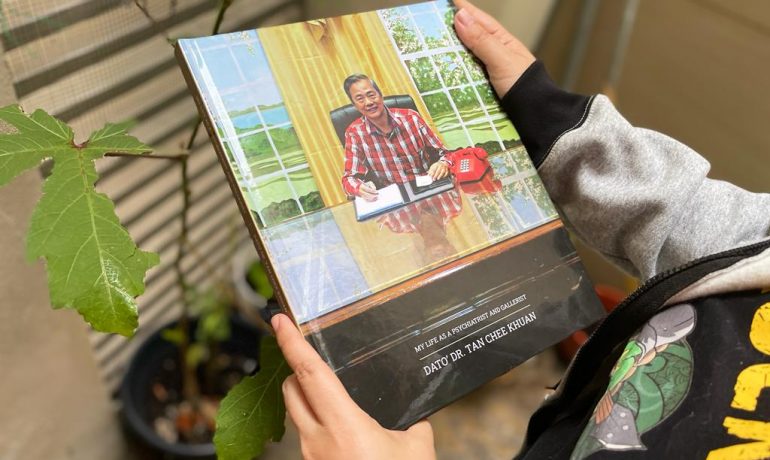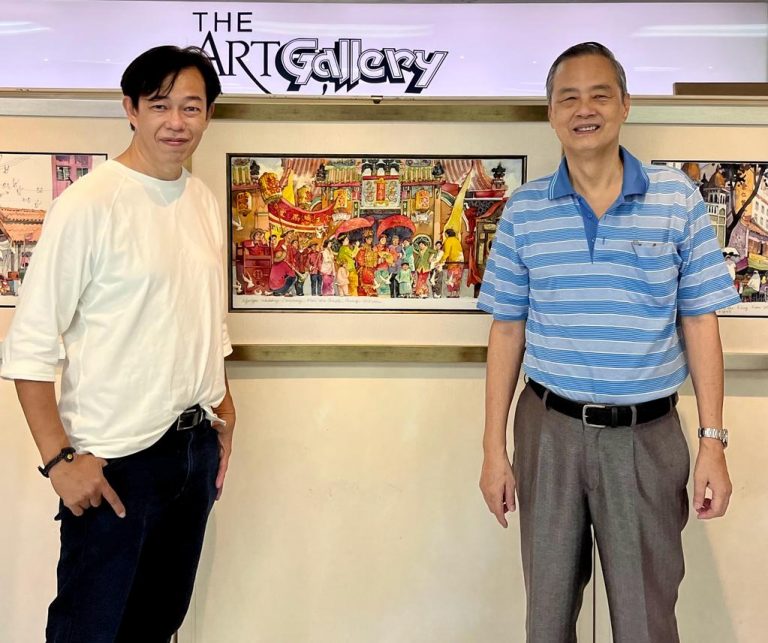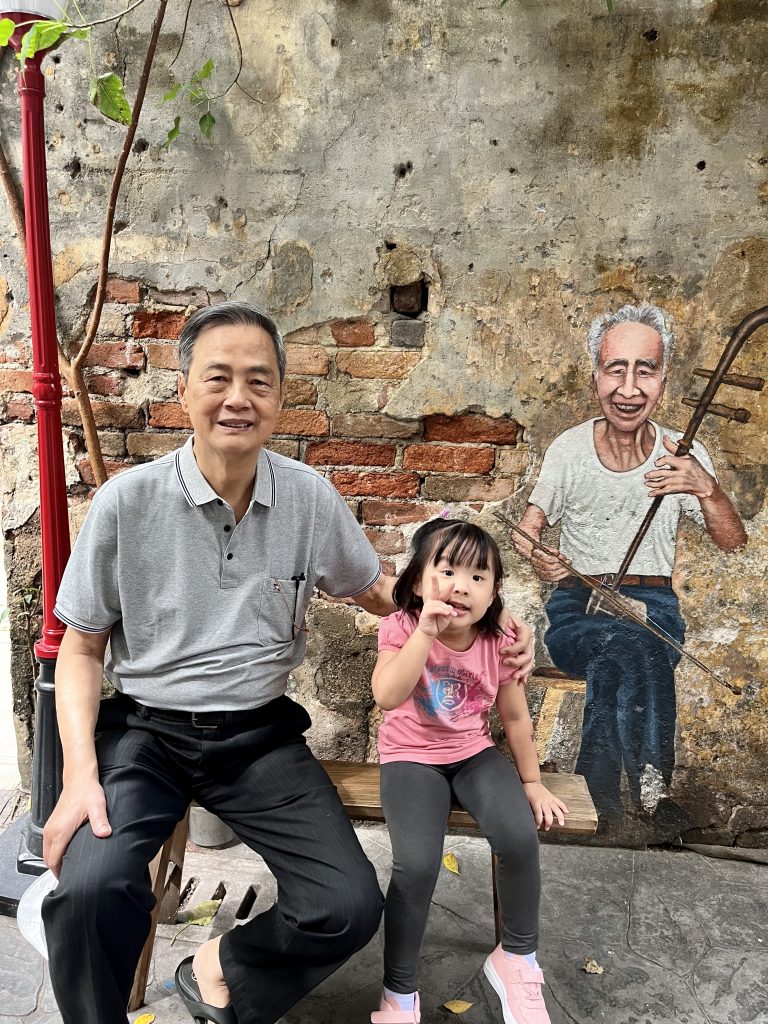Dato’ Dr Tan Chee Khuan’s autobiography My Life As A Psychiatrist and Gallerist provides fascinating and enlightening glimpses into the life and mind of one of the key players in Malaysia’s art scene.
By Emilia Ismail
Dato’ Dr. Tan Chee Khuan’s autobiography My Life As A Psychiatrist and Gallerist was born while the author stared at death. The year was 2020, and Dr. Tan had been diagnosed with prostate cancer. “I am 73 years old, and I am not sure or concerned how long I will survive. I am ready to reunite with Siau Bian anytime,” he writes.
But he wanted to commemorate the 20th anniversary of his wife’s demise and to mark his stay in Penang for 40 years. And so, in September 2020, he began writing this book. It was a race against time, because he wanted to finish it before death took him (fortunately, Dr. Tan is now in remission). Published in 2021, the autobiography covers Dr. Tan’s early years, his education, his experience as a psychiatrist, and his subsequent involvement in the arts scene, first as a collector and later as a gallerist, writer, and publisher.
The book begins with Dr. Tan’s childhood and early education in Muar, Johor. Born in 1948 to a postal clerk father and an artistic housewife mother (who inspired Dr. Tan’s love for art), Dr. Tan recalls his childhood as tough. His father, a frugal and far-sighted man, bought a few pieces of land where he planted rambutan trees and rubber, and Dr. Tan worked in the rambutan orchard while he was still in school. “Thanks to my father,” he writes,” I have since then been mentally and physically strong.”
One needed to be mentally and physically strong to endure university life in the 70s, when ragging was accepted. For the first few weeks as a freshman at the University of Malaya, Dr. Tan was ragged because he was mistaken as the son of opposition leader Dr. Tan Chee Khoon. He recounts some freshmen who refused to obey the seniors were given the “royal flush”, a type of punishment where the victim’s heads were flushed in the toilet bowl.
But life in the university wasn’t bad for young Dr. Tan because it was when he met his wife, Siau Bian. They got married in 1973 when he became a houseman.
Dr. Tan (right) with Penang-based painter Alex Leong. Photo credit: Dr. Tan Chee Khuan.
Dr. Tan started to collect art produced by local artists when he moved to Penang and began to heavily contribute to the local arts scene as gallerist, writer, and publisher. Together with his wife, he established The Art Gallery, Penang in 1989, providing all artists, established and emerging artists alike, a platform to showcase their masterpieces. Furthermore, Dr Tan also promoted the development of the local arts scene through book publications. To date, Dr. Tan has published 70 art books which have been an invaluable source of reference for today’s art writers and researchers, having been consistently cited. “Tan Peng Hooi and Koay Soo Kau are the most vocally appreciative of my publishing efforts. They said that I was responsible for making Penang artists well known in Malaysia. Some of them were invited to exhibit in galleries all over the country,” he writes.
As a writer, he renewed the interest in the works of often-overlooked pioneer artists by coming up with the concept of “Pioneer Artists of Malaysia” in the 1990s and writing books about them. “I know that in Singapore, they recognised six artists as pioneers, viz, Cheong Soo Pieng, Chen Chong Swee, Liu Kang, Georgette Chen, Chen Wen Hsi and Lim Cheng Hoe. So, I decided to determine who our Malaysian pioneers should be, using my own criteria,” he shares.
There is much to be gleaned here, but one of the most striking aspects of the book is Dr. Tan’s unapologetic stance on taking on adversaries. In 1990, Dr. Tan wrote and published Penang Artists 1920 to 1990, a book that features 65 Penang artists (and Kedah artists who exhibited frequently in Penang). Launched by the then Chief Minister of Penang Tun Dr Lim Chong Eu, the book was well-received by artists and art collectors as information about local artists was hard to come by at that time. However, artist-cum-art critic Redza Piyadasa thought otherwise. Piyadasa condemned Dr. Tan for referring to Yong Mun Sen as the Father of Malaysian Painting, calling it a “pompous claim made without any critical discussion and analysis”.
In response, Dr. Tan spent four years and an enormous sum of money to research, write, and publish Social Responsibility In Art Criticism (Or Why Yong Mun Sen Is The Father of Malaysian Painting) as a scholarly rebuttal to Piyadasa. The conclusion: “There was a deafening silence from him which was heard throughout the art world…He never troubled me again.”
Dr Tan Chee Khuan (left) with his granddaughter Tan Xin Ting, the youngest of his two grandchildren. Photo credit: Dr Tan Chee Khuan.
Writing in a candid, straight, and concise style, Dr. Tan conjures an atmosphere with such intimacy that readers will feel that they’re his buddies. He cynically shares that he is not a member of the MaFia (Master of Fine Arts) and calls Piyadasa a “nincompoop” and “an ass”. He confides with breezy nonchalance that he no longer believes in a compassionate God. He shares carefree stories of his university days, where he experimented with substances and pirated medical textbooks for extra money. He comments about how fortunate he is to have acquired two Dali sculptures at lower prices so his children “can have one each”. He writes about his struggle caring for his sick wife, the assets he acquired, and more.
In the end, of course, Dr. Tan’s autobiography is not just the story of his life as a psychiatrist and gallerist but his journey as a husband, a father, a collector, a painter, and more. The reader can only hope that Dr. Tan will have the luxury of time to improve the book’s flow in the second edition. This book is so valuable and insightful, that as much as it is enjoyable to read, it deserves an editor.
Sometimes, the seed of art appreciation is found in books such as this that offer an unprecedented look into the inner workings of the art scene and the mind of one of its key players—reading interesting stories about the art scene and thumbing through the collection of paintings by pioneer painters and rare documents from renowned auction houses like Christie’s has inspired art appreciation in most readers.
My Life As A Psychiatrist and Gallerist will be officially launched on 5 March 2023 at The Art Gallery, Penang. To purchase a copy of the autobiography, contact The Art Gallery, Penang at +6012 604 1434 or email info@theartgallerypg.com. You can also follow The Art Gallery, Penang’s Facebook and Instagram pages for updates.
Emilia Ismail is the co-founder of Penang Hidden Gems and a writer. Her articles can be found in The Star, Penang Monthly, and Penang Global Tourism.
Cover photo credit: Emilia Ismail.



